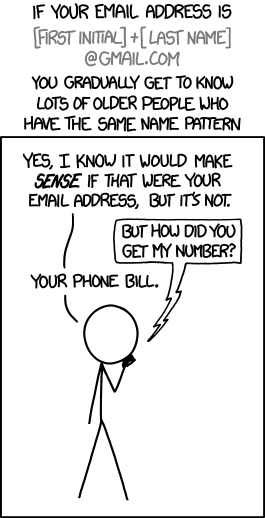About a year ago, in Washington’s Mount Pleasant neighborhood, an independent grocer called Bestway changed hands. The new owner is In Suk Pak, a South Korean by way of Pennsylvania. He renamed the store Bestworld, replacing the second word of the big-block letters out front. Then he rejiggered the store’s product mix to fit the neighborhood’s changing demographics, adding gourmet chips and high-end beers, and Asian items like wasabi peas and dried seaweed.
But there was one aisle he didn’t touch: Goya’s, which is festooned with blue Goya-labeled tape and features a Goya-logoed spice rack. The aisle is densely packed with sacks, cans, boxes, bottles and jars of every imaginable bean, grain, sauce, juice and spice. The Goya salesperson just tells him what he needs to fill the section, and he’s happy to take the advice.

In Suk Pak, not shown, owner of the grocery store Bestworld, caters to his customers by stocking his store with a wide variety of Goya products. (Nikki Kahn/The Washington Post)
“I’m not Latino. I don’t know what they eat,” says Pak, shuffling around in a pink striped polo shirt supervising stocking on a Wednesday morning. Plus, he says, all the neighborhood’s non-Hispanic residents will buy Goya, too. Though it’s not as if there’s any shortage: Just a block away, Progreso International also stocks Goya products — they’re both cheap and of good quality, the proprietor says. That level of trust among urban Hispanic communities has landed Goya in nearly every corner bodega and medium-size independent grocery store like Bestworld.
And while Goya seems exotic, the company, is based in New Jersey. It was founded 77 years ago by Spaniards who had come to New York through Puerto Rico. It’s hired enough natives to develop a flavor profile that’s decently close to the real thing and has marketed itself as an Hispanic-owned company. Now, it’s the largest Hispanic-owned food company in the United States, with $1.3 billion in sales last year (still a long way behind market giants like General Mills, which brought in $16.7 billion in 2012).
But the burgeoning Hispanic population isn’t enough for Goya. It has started moving into other foreign cuisines, like Indian and Chinese, in a bid to become the food company for all people new to America. It’s also developing products for second and third generations of immigrants, who might want something pre-cooked but still homey-tasting, or who might have intermarried with other nationalities and want to mix everything together (“Latin Fusion” is featured prominently in the Web site’s recipe section).
“It’s a United Nations kind of label,” says Bob Gorland, a supermarket consultant at Matthew P. Casey & Associates. He regards Goya, more than any other brand, as a section unto itself, much like the kosher aisle or natural foods area.
Now, as the “general market” becomes more interested in ethnic cuisines, Goya has positioned itself as the “authentic” option that you don’t have to rummage through ethnic markets to find. In other words, Goya is becoming mainstream.
Which, commercially, is a pretty unbeatable approach.
—-
Goya — so named after the Spanish painter because founder Prudencio Unanue Ortiz liked the simplicity and vague familiarity of the name — started out packing and selling olives and olive oil in Lower Manhattan. It’s now a sprawling network of 16 worldwide processing and distribution centers, mostly U.S. based in the United States. In Spain, Goya now supplies the reverse immigrant population from Latin American countries. Although the bulk of Goya’s beans are grown in the United States, many of its specialty products come from around the world: coconut water from Thailand, yucca from Costa Rica, quinoa from Peru.
The company headquarters is across the street from the Secaucus, N.J., train station, but visitors are advised to take a cab door to door, so as not to get lost in the nest of highways in between. The factory entryway, lined with little plaques signifying production records, smells like motes of adobo have drifted through ceiling vents. On the reception desk is a copy of “The Inferno,” by Dan Brown, who after “The Da Vinci Code” moved on to conspiracies surrounding public health. (Later the book would pop into a conversation with a senior executive, who thought of it when speaking of the trade-off between relying on genetically modified crops and the need to feed a booming global population.)
To see the actual packing underway, visitors don a hairnet and earplugs and push through a door to the factory floor, where machines deposit rice into pre-printed boxes, spice into packets and beans into bags (most of the canning is done up in Buffalo). A scale can tell whether there are even a few grams are missing and will boot an offending product off the assembly line into a bin. From there, conveyor belts run along the ceiling, ferrying boxes toward a device that packs them neatly into palettes, ready for storage.
In modern food processing, everyone’s a manager, just watching to make sure the robots are doing their jobs right and sweep up the stray grains that fall onto the floor. From there, it’s another very short cab ride to the cavernous warehouse, which is a vast facility stacked floor to ceiling both with gigantic sacks of raw ingredients on their way to packaging as well as Goya’s 2,200 finished products (plus quite a few products from other big brands like Nestle that Goya stores and distributes). Forklifts glide silently among them, pulling things out for loading onto trucks for delivery runs up and down the Eastern Seaboard.
The fact that Goya has warehouses at all is unusual. Many big food companies just ship their products directly to ones belonging to grocery chains, like Safeway, which load their own trucks from there. Goya has always done direct store delivery (or “DSD” in industry jargon), because, as the owners see it, every store has a different audience. The sales staff researches local immigrant groups with the help of a business intelligence tool called Geoscape, as well as more enterprising techniques, like hanging out at the local money transfer franchise to see where people are sending checks home to. That way, Goya they know how to stock exactly what Cubans or Salvadorans or Peruvians are looking for, which creates brand loyalty.
“To us, it’s important to make the connection through a product that maybe we’re not going to sell truckloads of, but we’re going to have the product on the shelf so when a consumer goes in they say, ‘Wow, I can relate to Goya because it’s authentic, this product makes me feel like I’m at home,’” says Peter Unanue, the chief executive’s younger brother and an executive vice president in charge of distribution.
In regentrified neighborhoods, like parts of downtown Philadelphia that are now packed with yuppies, the less exotic products sell better. “You put a pacaya or a loroco in, and they don’t know what to do with it,” says Juan Lopez, Goya’s district manager for the Mid-Atlantic. “You put a low-sodium yellow rice, pretty much everybody across the board eats beans and rice.” (Though a jar of pacaya or loroco might also convince yuppies that the rest of Goya’s products are more authentic than most). Often, Goya’s representatives will even help the big supermarkets decide how to stock the rest of their store to welcome local immigrant groups, like selling plantains and yucca in the produce section if there are lots of Mexicans living nearby, and consulting on the right cuts of meat.
In more and more demographics, Goya is now familiar.
“People have the tendency to be a little more creative with what they’re cooking, and I think they get that alternative with the products Goya offers,” says Gary Budd, who manages stocking for Giant Foods in the Mid-Atlantic. Usually he’ll put all Goya’s products in one aisle, but if it looks like they’re selling well and have crossover appeal — like yellow rice — he’ll stock some of them in the general sections as well. At Giant, Goya advertisements play on the intercom, in a female voice with no hint of a Hispanic accent.
Some natural foods have made that leap, too: Kashi cereal, for example, appears both in the natural-foods section and the regular cereal aisle. “We see a lot of that, switching over to the mainstream,” he says.
Now even Wal-Mart is seeing things Goya’s way. “When we first started to do business with them, they wanted to put a generic program in place,” Lopez says. “It wasn’t successful because of the diverse ethnicities.”
Goya certainly isn’t without competition — from name brands like Del Monte and Bush’s, but also often from supermarkets themselves. Giant and Target will put a store-brand can of beans right next to Goya’s, at a few nickels off the price. In those situations, Goya likes to contend that its products are just higher quality than the generic brand; it has run ads showing a dumped-out Goya can having more actual beans in it than a cheaper substitute.
“Can the homemaker risk saving 10 cents, to make a dish, and they go home, and it turns out lousy?” says Joe Perez, Goya’s senior vice president in charge of sales and marketing.
The difference in quality isn’t necessarily noticeable, even to discerning palates. “They’ve never seemed better to me,” says Mark Bittman, the New York Times food writer and best-selling cookbook author. “I’ve never detected the slightest difference in canned beans, except sometimes they taste tinny. And overly salty. But both of those phenomena have occurred with Goya, in my experience.”
Ubiquity, however, is an even bigger advantage for Goya than perceptions of quality. Food bloggers will sometimes specify Goya ingredients because it’s the easiest way to identify what to look for.
Yvette Marquez runs a popular Mexican food Web site called Muy Bueno. She started out in El Paso, where there were lots of options for ingredients. Now she’s in Denver, where she’s found that the ethnic food aisles often can be pretty much are more limited to Goya products. “I’ve recommended Goya products because I know people will be able to find it,” she says. Plus, they have items like ready-made empanada dough.
But, she notes, it’s not exactly gourmet fare. The hipster foodies will still probably seek out super-specialty items in bodegas that carry things the supermarkets won’t. For everyone else, there’s Goya.
—-
Upstairs from the break room at the Goya plant, past the test kitchen, across a floor full of sales and advertising people, is Bob Unanue’s office. It’s full of the memorabilia from the past of a three quarters of a century run, including a 6.6-pound coffee-table book commemorating Goya’s 75th anniversary and a three-foot-tall model can of beans.

Bob Unanue, president of Goya foods, Inc. (Yana Paskova/For The Washington Post)
In 2004, Unanue took over from his uncle Joseph, who died in June. Inheriting an empire has piled on the frequent-flier miles. He breezes in, puts down his coat and heaves himself into a couch, just back from a few days at a bean convention in Chicago.
At conventions, buyers like Unanue forge and maintain relationships with farmers from the “bean belt” that stretches from New York over the mountains to Idaho. “I learned something yesterday I didn’t know, which happens a lot,” Unanue begins in a soft Jersey accent. “The average age of a bean farmer is 63 years old. It’s a lot more work than if you’re planting corn or soybeans.” That launches a diatribe against federal ethanol requirements for gasoline that have boosted the price of corn — and the cost of farming, even for beans.
That’s a real concern for Goya, which can’t stray far from its low-cost price point and which is scrambling to supply a ballooning infrastructure. The company has opened facilities in the past few years in Miami, Houston and outside Chicago, and it’s expanding westward and into Mexico. Meanwhile, its product line has doubled over the past eight years, moving into categories like healthy food lines and organics.
Huge food companies typically diversify their offerings — and bolster their authenticity in hopes of resonating with the immigrant crowd — by buying smaller brands like Hormel Foods did with La Victoria Mexican products, Campbell Soup did with Pace Salsa, and B&G Foods did with Ortega.
Goya banks on its own authenticity, developing all its own products along two basic principles: First, stick with tropical cuisines that share ingredients, like coconut milk and pigeon peas that can be adapted for Indian recipes (they also sell imported Basmati rice and Jasmine rice for Thai food). Second, develop more convenient products that serve the upwardly mobile immigrant, like microwaveable rice and beans, low-sodium and sugar-free colas, baby food in Latin flavors and even stuff in squeeze tubes. And all the while, teach the rest of the market how to use your foods, which Goya does through a series of cookbooks, especially for cuisines as they start growing popular — Peruvian ceviche, for example.
“People get educated through a trendy approach,” Unanue says.
Sometimes, though, Goya you can’t do it all itself. For its new line of baked beans, which have no Spanish on their shiny metallic labels, Goya partnered with another processor. If the product starts to sell well, Unanue says, they’ll bring the production in house.
While charging into the 21st century, Goya is also a very old-world American company in many ways. It has a high cost structure, with a large sales force and labor-intensive delivery model. At the same time, its growth potential makes it an attractive acquisition target. Buyout offers come his way “all the time,” Unanue says. But he says he couldn’t be less interested in selling to some megacorporation or hedge fund that might turn Goya into a financial instrument, like KKR did with Nabisco.
“Sometimes, an outside company would come in and say, ‘Well, the way you do business is very expensive,’ ” Unanue says. “We can cut costs, and then there’s hundreds of brokers out of jobs, hundreds of drivers out of jobs, and warehouse people, and we’re not serving the consumer.”
Plus, that might ultimately not be good for the business. Joe Perez takes Progresso Soup — now owned by General Mills — as a cautionary tale.
“Progresso in its day, the 1950s and 1960s, was the Goya of Italian food. And now what is Progresso? It’s a soup company,” Perez says. “They were lulled into believing ‘yes, go through the major chains, don’t have a single focus, we’ll take these items only.’ For two or three years, sales were booming, and after that, they started to decline. Then it became a question of the chain saying, ‘We don’t need all these items, let’s get rid of them.’ You lose your authenticity. It becomes, ‘Well, we don’t really need you anymore, there’s all these other lines. You’re not that special. You’ve lost your reason for being.’ ”
America already has a Sysco foods, after all, which supplies general staples in bulk. What Goya is becoming is a Sysco for the new America, where chipotle is as common as ketchup. At the end of the day, what’s good for immigrant America is good for Goya.
“We are a country of immigrants, and thank goodness,” he says. “Because that way, we can tailor our product lines to all those who are coming in.”




























































